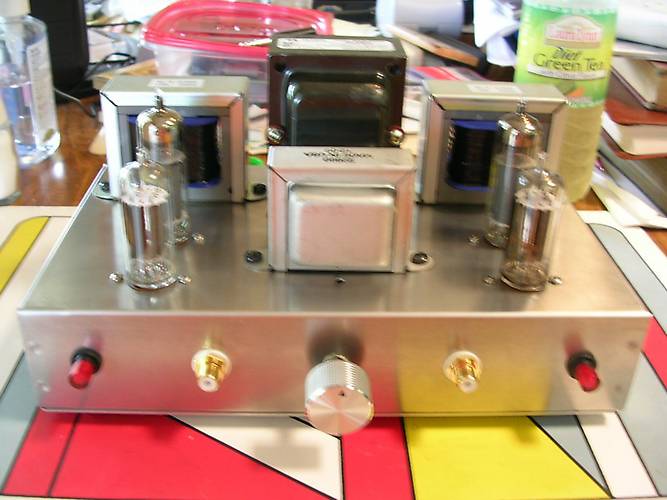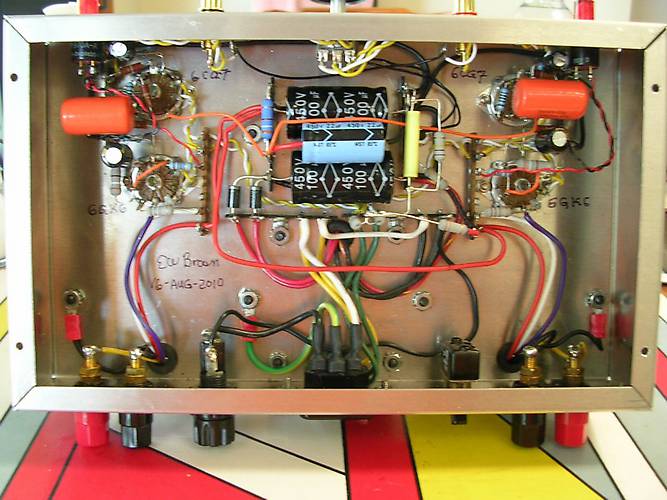I was digging through the tube stash and could find only three more reasonably closely matched 6GK6s, and the 16GK6 situation is also three assorted brands of NOS and the reat are all used, tested, and "all over the map" as far as transconductance.
And I found that I had a some NOS RCA and GE 6DZ7s just pining away, so I changed course, and built up a 6DZ7 UL PSET during Wednesday and Thursday. FWIW< the RCAs have the GE marking codes, so I'd say these are ALL of GE manufacture.
6DZ7s are essentially two 6BQ5s (or 6GK6s) packaged in an octal "fat bulb" envelope. Cathodes and screen grids are shared on their own pins, otherwise it would have to be at least a 10 pin base

There is one slight difference with 6DZ7s, they like to have a lower G1 grid resistor than do individual or palallel 6BQ5s, so I ended up using 110K ohms (actually two 220K resistors parallel) , and 0.68 uF Auricap interstage coupling caps.
With 220K grid resistor, the G1 voltage was a bit unstable, and adding the second 220K in parallel neatly cured that issue. I refered again to the 6DZ7 data sheets, and it states that the maximum grid resistor value is 300K per section, so 150K should work, I went with 110K because it was easier to parallel a second 220K resistor than it would have been to search for, then swap in a 150K resistor (and remove the first 220K resistor) .
Just like lightning, I prefer the path of least resistance


If all neatly fits on an old Bud 13 X 7X 2 chassis. Power trannie is a PA774 (naturally), and OPTS are GXSE15-9-5K. Driver is the same 6CG7 SRPP circuit which has become my "standard" for current and future designs. It looks very similar to the 6GK6 amp, just on a larger chassis needed to accomodate the larger power and output iron, and fatter tubes.
Sounds very good, is totally hum and ripple free (thanks to a total of over 700 uF of PSU filtering), and is more powerful than the previous 6GK6 UL SET amp. B+ is about 365VDC (same as in the ST35s) and each pentode section is drawing about 38 mA, slightly higher than the "normal" ST35 value. I use 200 ohm, 5W WW cathode resistors, bypassed with 470 uF / 50V which I had in my parts stash. I considered using GXSE15-8-3.5K OPTs for this project, for even more output power, but the THD would have been somewhat higher, and I have another planned purpose for these OPTs.
Photos to be posted soon.
I have some more NOS 6DZ7s, perhaps a simple, low-tube-count PP design is next... With the "compact amp" design, I could design a three-tube stereo PP amp

Or with SRPP drivers as in the "Odd Watt" design, four tubes (with 6CG7, 5965 or 12AT7 drivers).
Update: Now that it has about ten hours' of run time, the amp is starting to sound REALLY good, I s'pose that the coupling cap and OPTs really DO undergo a "break-in" process.

/ed B







 So, I just pushed the edge of the envelope just a little, this time around.
So, I just pushed the edge of the envelope just a little, this time around.







